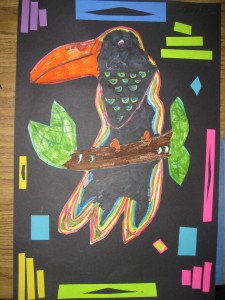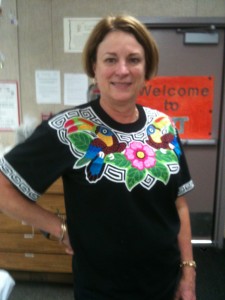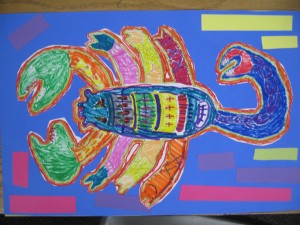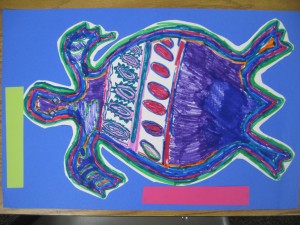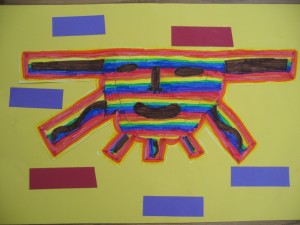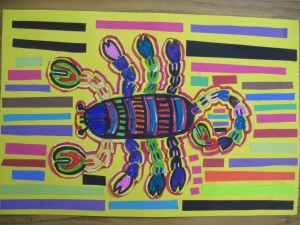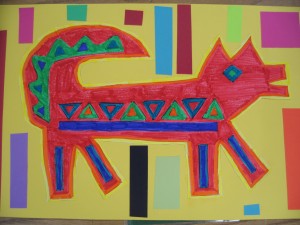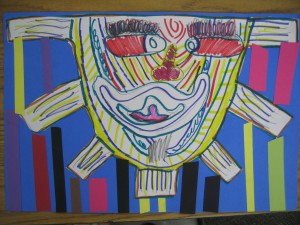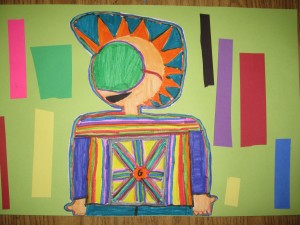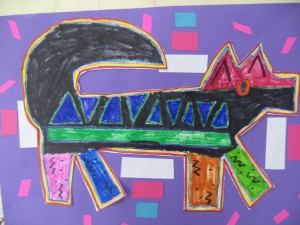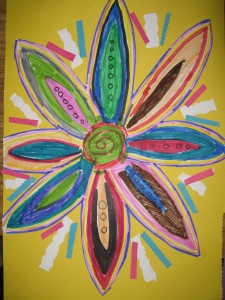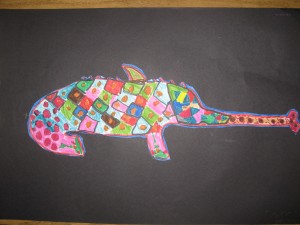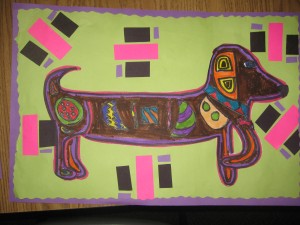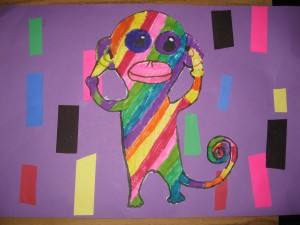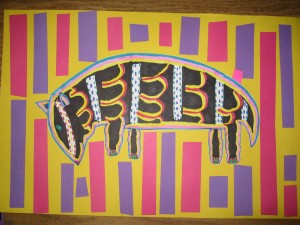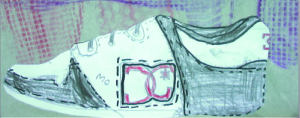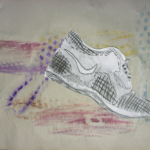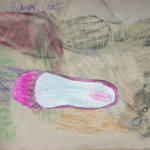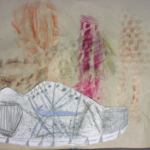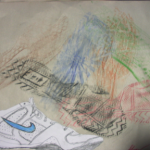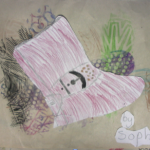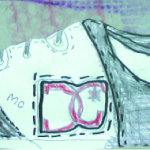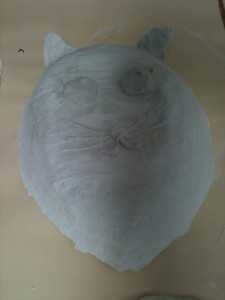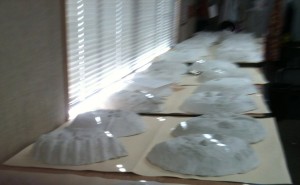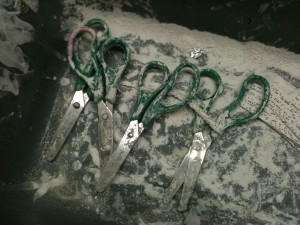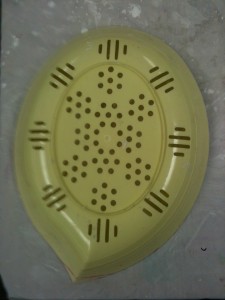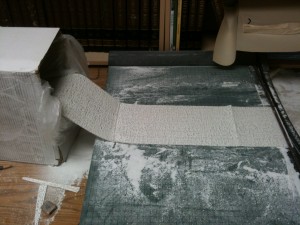The 4th grade studied fabulous, colorful molas. Molas are intricate, multi-layered textiles made by the Kuna Indians, of San Blas Island, Panama.
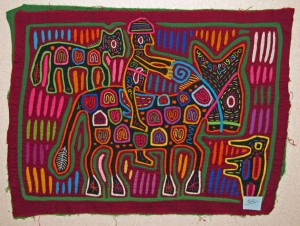
Panamanian Mola textile. Photo by galenfrysinger.com
Luckily we had a tour guide. Ms O’Brien came to the art room, talked to us about the Kuna and shared her extensive mola collection with us. We are so lucky to have Ms. O’Brien at our school!
Kids were fascinated! They loved turning the bright colored molas to the back and looking at the tiny stitches.
For the art project, we used the lesson plan found in the excellent book Dynamic Art Projects for Children by Denise M. Logan. This year I made (optional!) paper templates enlarged from the drawing aid page in the book. Kids focused on making intricate designs and colors. Art is finished with colorful paper strips glued down to simulate textile cut-outs.
This project was perfect for the 4th graders. Some used the templates, some didn’t. All the student art turned out vibrant and colorful. A highly successful art project. This is a popular art project for kids around the world! Click here to see paper molas from some talented Australian kids.

